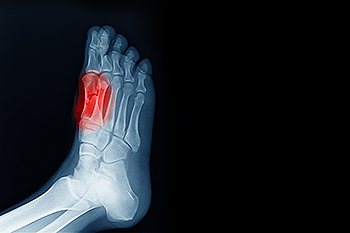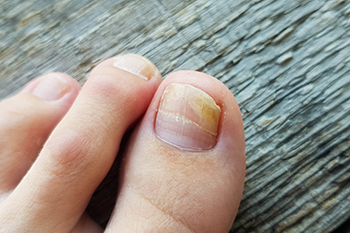
Ankle sprains, those unexpected and often painful disruptions, can leave us hobbling while attempting to complete daily activities. These occur when the ligaments connecting the ankle bones get stretched or torn due to sudden twists or turns. Participating in sports activities, walking on uneven surfaces, and wearing ill-fitting footwear can contribute to these mishaps. Symptoms can include pain, swelling, and difficulty walking. Early intervention is crucial for effective recovery. Rest, compression, and elevation are initial steps that can help to reduce pain and swelling. Gentle exercises, prescribed by a podiatrist, can aid in restoring strength and flexibility. In severe cases, immobilization with a brace or cast may be necessary. Ensuring proper care and treatment fosters a smooth healing journey, allowing individuals to step back into their routine with renewed confidence. If you have endured an ankle sprain, it is suggested that you speak with a podiatrist who can guide you toward the correct treatment.
Although ankle sprains are common, they aren’t always minor injuries. If you need your ankle injury looked at, contact Alex Kim, DPM from AVID Foot & Ankle Center. Our doctor can provide the care you need to keep you pain-free and on your feet.
How Does an Ankle Sprain Occur?
Ankle sprains are the result of a tear in the ligaments within the ankle. These injuries may happen when you make a rapid shifting movement while your foot is planted. A less common way to sprain your ankle is when your ankle rolls inward while your foot turns outward.
What Are the Symptoms?
- Pain at the sight of the tear
- Bruising/Swelling
- Ankle area is tender to touch
- In severe cases, may hear/feel something tear
- Skin discoloration
Preventing a Sprain
- Wearing appropriate shoes for the occasion
- Stretching before exercises and sports
- Knowing your limits
Treatment of a Sprain
In many cases, the RICE method (Rest, Ice, Compression, and Elevate) is used to treat ankle sprains. However, you should see a podiatrist to see which treatment option would work best with your injury. In severe cases, surgery may be required.
It is important to ask your doctor about rehab options after you receive treatment for your injury. Stretching, strength training, and balance exercises may help the ankle heal while also preventing further injury.
If you have any questions, please feel free to contact our office located in Little Elm, TX . We offer the newest diagnostic and treatment technologies for all your foot care needs.





